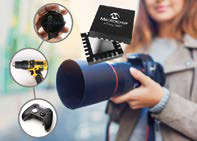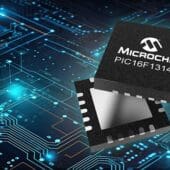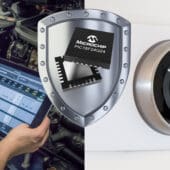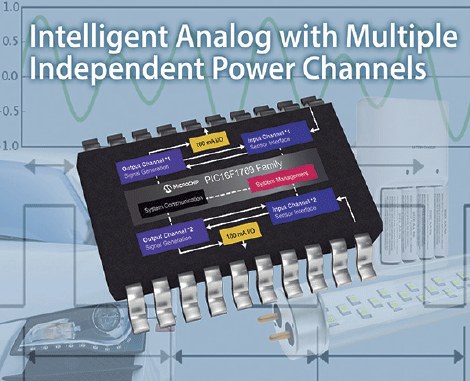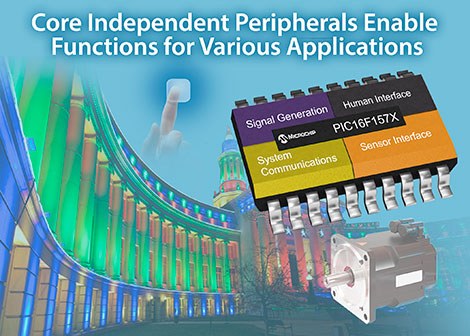Microchip announces the new PIC18 Q10 and ATtiny1607 families of 8-bit microcontrollers, featuring several intelligent Core Independent Peripherals (CIPs) that simplify development and provide fast response time to system events.
Advances in the architecture of PIC® and AVR® microcontrollers have optimized these devices to implement closed-loop control, so systems offload the CPU to handle more tasks and reduce power consumption. A key advantage of the PIC18 Q10 and ATtiny1607 microcontrollers is that the CIPs handle tasks independently and reduce the processing demand on the CPU. System designers can also save time and spend less design effort with hardware-based CIPs, which significantly reduce the amount of software that needs to be written and validated.
Both families incorporate functional safety and work at a voltage of up to 5V, thus increasing their immunity to noise and are compatible with most sensors with analog and digital output. The new ATtiny1607 family, supplied in a compact 3-pin 3 x 20mm QFN package, is optimized for space constrained closed-loop control systems such as portable power tools and remote controls. In addition to integrating a high-speed A/D converter that provides faster conversion of analog signals resulting in deterministic system response, the devices improve oscillator accuracy, thus allowing designers to reduce the number of external components and the costs. Among the CIPs in the PIC18 Q10 family are the Complementary Waveform Generator (CWG), which simplifies switching designs, and an A/D converter with calculations (ADC2) that performs advanced calculations and filtering of data in hardware without the intervention of the kernel.
These CIPs allow the CPU to perform more complex tasks, such as user interface controls, and remain in a low-power mode to save power until processing is needed. All PIC18 Q10 products are supported by MPLAB® Code Configurator (MCC), a free software extension that provides a graphical interface that makes it easy to configure peripherals and features. MCC comes embedded in Microchip's downloadable MPLAB X Integrated Development Environment (IDE) and MPLAB Xpress IDE, which requires no software download. You can also use the Curiosity High Pin Count HPC Development Board (DM164136), a fully integrated board for rapid prototyping, to get started developing with these microcontrollers. Rapid prototyping with the ATtiny1607 family is supported by the ATmega4809 Xplained Pro evaluation kit (ATmega4809-XPRO).
This USB-powered kit features tactile buttons, LEDs and extension strips for quick configuration, as well as a programmer/debugger that fully integrates with the Atmel Studio 7 IDE and Atmel START, a free web-based tool for configuring peripherals and software that speeds up the development. The PIC18 Q10 and ATtiny1607 families are now available as samples already for volume production. For more information, visit: ATtiny1607 family or PIC18 Q10 family.


